Mystery surrounding John Chilembwe’s death
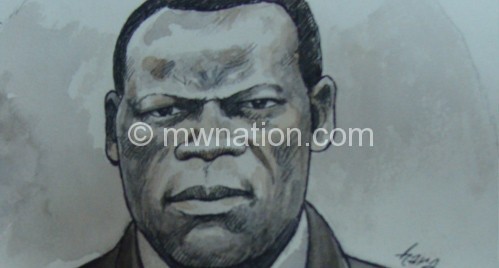
This analysis by GIFT WASAMBO KAYIRA, a lecturer in Chancellor College’s History Department, is based on recent findings by David Stuart-Mogg.
The year 2015 will be an interesting one in the history of Malawian nationalism. Malawi will have clocked 100 years since the 1915 Chilembwe Uprising. While events surrounding the uprising are very clear in history, Chilembwe’s death remains highly debatable. A man who enjoys a special day in Malawi can hardly boast a memorial tower in his honour at his grave site. What abounds regarding Chilembwe’s death is nothing other than speculation, myths, legends and tales. This essay is a contribution towards Chilembwe’s capture, death and burial. It argues that with recent evidence tendered by a Malawianist historian, David Stuart-Mogg, the mystery surrounding Chilembwe’s death and burial will soon be a thing of the past.
The biographical, social, economic and political environment in which Chilembwe rose and emerged to the position of prominence has been thoroughly documented. It is well known that having gone to America under the sponsorship of Joseph Booth, a Baptist missionary, he returned to Malawi in 1900. With assistance from the American Baptist, he purchased 93 acres at Mbombwe in Chiradzulu and established the Providence Industrial Mission (PIM) in 1901.
It was within this locality that he fought William Jervis Livingstone who had been accused of several issues ranging from racial discrimination, unfair treatment of Africans working on his estate to withholding access to land to the Africans. Chilembwe made several attempts to make known to the British about his grievances and those of his counterparts. For instance, he sent a letter to the Nyasaland Times complaining about African participation in a European war. The letter was published on November 25 1914 but due to increased censorship, this particular issue was never circulated. In reaction, government summoned Chilembwe to officially present his grievances, but he declined for fear of being arrested and instead one of his close associates, David Kaduya went on his behalf.
Chilembwe’s uprising had been planned to take place later than the actual day of 24th January when it took place. News that he was to be arrested reached him on 22nd January through one Morris Chikwana who had informed him of his arrest and the planned attack on his Mbombwe Headquarters on the 24th of January 1915. Prior to this date, Chilembwe summoned a meeting where people like John Gray Kufa, Wallace Kampingo, David Kaduya, Daniel Mangulamba, Andreck Jamali, Stephen and Andrew Mkulichi, Yotamu Bango and Wilfred Ntambo were available. It was out of this meeting that a resolution was made to counter the planned attack by the British, but this was poorly executed, hence the failure of the uprising.
Two schools of thought surround the position of Chilembwe after 1915 events. One holds that after the rising, the colonial government failed to capture him such that he ran out of the country through Mozambique border. The second maintains that Chilembwe was shot dead near Migowi River as he was running for his life.
In 1997, Stuart-Mogg interviewed former official historian of the Malawi Army, Lieut. Col. James Njoloma who at that time was serving a 15-year sentence at Zomba Maximum Prison. Since Njoloma had distinguished himself as a specialist in Chilembwe story, Stuart-Mogg thought he could offer some valuable thoughts on his death. In their discussion Njoloma repeated his certainty that John Chilembwe escaped over the border into Portuguese East Africa (Mozambique) where he finally died of natural causes in 1932. In his book, Let us Die for Africa, D.D Phiri comments in passing on Chilembwe legend, observing that many of his followers believed that before the rising, Chilembwe had hidden a horse behind his PIM. Once the revolt had started, he rode it across Mulanje Mountain where he eventually went to America. A number of his followers still believed that Chilembwe would one day come back to drive colonial masters out of Nyasaland. It appears the above sentiments were well corroborated through the testimony of one of the surviving grandchildren of Chilembwe, Grace Chapunga who testified before Stuart-Mogg that Chilembwe was not killed, but his elder brother, James Bwanali Chilembwe was.
The above school could easily be dismissed as mythical full of wishful thinking as expressed by Chilembwe’s followers and relatives. However, we should note that this school does not deny the fact that someone was shot dead in Mulanje alongside one Morris, Chilembwe’s nephew. It argues that a follower accoutered in Chilembwe’s clothing and carrying his personal effects, willingly sacrificed his life to allow his charismatic leader to escape and live to fight the other day. The major question therefore has been that of tracing the actual identity of the man who was shot dead in Mulanje and where exactly he was buried. Earlier works in the ranks of George Shepperson and T. Price, Independent Africa, George Simeon Mwase, Strike a Blow and Die, D.D. Phiri, Let us Die for Africa, remain obscure on the real facts surrounding the identity of the man who was shot dead in Mulanje. The report of the commission of inquiry which Governor George Smith had instituted to investigate the uprising equally addresses itself more to its causes as opposed to details on Chilembwe’s death and burial – perhaps such issues would not have served the best interests of the colonial State. What is very clear however, is that the alleged Chilembwe was gunned down by three men, in the names of Garnet Kadaya, Private Nasulo and Sergent Useni, (all the three Africans) on Wednesday, 3rd February 1915 following the proclamation published on 27th January by the Blantyre resident, Lewis Traherne Moggridge that a 20 pound reward would be given to the one who would capture Chilembwe and several of his lieutenants who were on the ‘wanted list’.
Evidence suggests that Chilembwe was shot at rather mercilessly. Private Nasulo fired first, but the alleged Chilembwe appear to have been partially wounded. Then Sergent Useni fired again but he still stood. Finally, Kadaya fired and hit him through the head whereupon he fell down. The other version maintains that when Chilembwe saw the three coming, he knelt down under a tree, holding his Bible he prayed. The three nevertheless did not capture him alive for fear of his many sympathisers across Mulanje Boma. Instead, they shot him dead. The question to ask is what certainty do we have that the man that was killed in Mulanje was indeed John Chilembwe and not James Bwanali, his brother, as alleged by family members and his followers? It is this question that requires a quick resolve.
R
ecent evidence shows that the three Africans that allegedly killed Chilembwe brought the body before the magistrate’s court in Mulanje. The purpose was to ascertain whether it was indeed Chilembwe they had killed. Magistrate Colin Grant presided over the matter on February 4, at 10am. Some few excerpts unearthed by Stuart-Mogg are worth sharing. The first to testify was Kadaya: Court: Did you recognise the body which you saw this morning and which the court saw? Kadaya: Yes, it was that of John Chilembwe. I met him once in Mandala store, Blantyre and another time in this district. I met him at Luchenya at the wire bridge he was cooking his food after returning from hunting elephants at Chiperoni. Court: Are you certain that this body is that of Chilembwe? Kadaya: Quite certain.
Another person that was brought in to testify before the court was Private Thomas, who was in the company of the three that had shot the man. Court: Did you know John Chilembwe by sight? Thomas: Yes, I was three years in Chiradzulu and had often seen him. Court: Then the body you brought in today and which the court has seen is that of John Chilembwe? Thomas: Yes, it is his body. Henry Holland Vassall, the assistant magistrate who had earlier examined the body was also brought in to testify. Court: When you came to the bodies of Morris and Chilembwe were they dead? Vassal: Yes, both of them. Court: Is the body which the court has just seen the body of John Chilembwe? Vassal: Yes, I know him. He has often been at Machamba to shoot (elephants) and I know him by sight well…This is certainly John Chilembwe’s body.
One could argue that given the 20 pound that was at stake, Kadaya and Thomas were less likely to provide contrary opinion about the identity of the man. In his examination of the body, Vassall noted that it was brought in together with a pair of spectacles, a pair of pince-nez, both had one lens missing, the right eye in each case. That Chilembwe may have deliberately left his treasured spectacles together with other personal effects with his follower to disguise his identity is highly questionable. Besides, the fact that several other people who testified never presented contradictory information renders their testimony slightly credible.
Convinced that this was Chilembwe, the magistrate ordered secret burial of the body in an unmarked grave about two miles away from Mulanje Boma close to the Esperanza Estate. This he did to avoid Chilembwe’s death becoming a focus of further upheaval and his burial site venerated as a place of pilgrimage. Evidence shows that the task of burying Chilembwe was delegated to John R. Downs, a Mandala employee, and another member of Nyasaland Volunteer Reserve. The two instead solicited the assistance of two police officers who carried the body and also dug the grave. Unfortunately, no record of his burial was left behind.
Some 40 years later after the event, one Andrew Stark, a planter, was told by an ex-employee at the old Esperanza estate that he was once a police sergeant and a member of the team that went to burry Chilembwe. He took him to a place, again two miles away from boma near the same estate, but at that time the grave could not be identified, obviously because it was unmarked. Fortunately, under the request of Stuart-Mogg, Stark was able to mark the spot on a large-scale aerial map believed to have been captured in the 1950s.
If such recent findings are anything to go by, it is perhaps safe to argue that Chilembwe was killed and his body buried right here in Malawi. The challenge we have as a nation is to locate the exact place of his burial with the possibility of erecting a memorial tower in his honour. Perhaps it is time the nation took such historical findings seriously. Even though a memorial pillar need not always be constructed at the exact spot where someone is buried, one at Chilembwe’s grave could be a rare place of historical importance in 21st century Malawi. Given the position of Mulanje District in tourism industry, Chilembwe would always live to contribute towards Malawi’s economy in the ages to come.


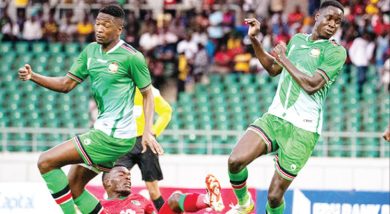
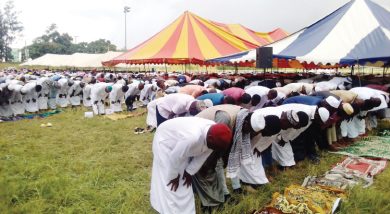
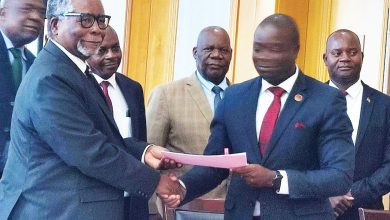
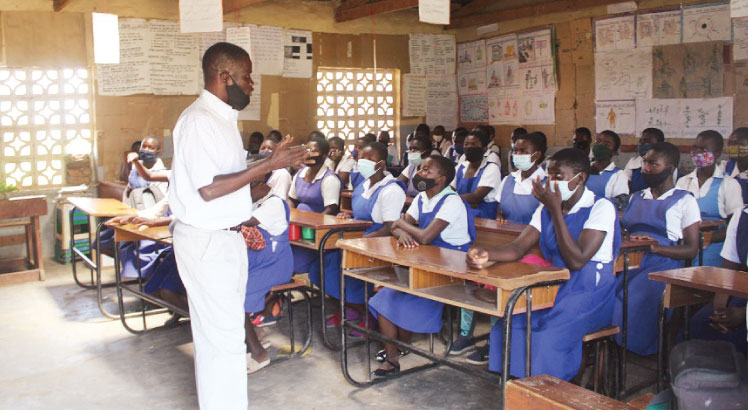
it makes sense, more of voting for Chakwera.
I have to admit, this is one of the few convincing articles I have read about the martyr, John Chilembwe. Enlightening indeed. Looks like there may be researchers, right here in Malawi, working on the mystery of the martyr’s death. That is a good thing, and satisfying indeed. So, there really is no concrete proof of Chilembwe’s death? I have always suspected so! Perhaps the authorities weren’t sure of the id, by Kaduya et al (not “Kadaya” – it’s gotta be “Kaduya” of the current Senior Chief TA Kaduya clan). Why weren’t Chilembwe’s relatives not asked to id the body – logistical travel problems? Or did the government suspect the body might not have been Chilembwe’s, in the first place? For what it’s worth, here is what I have been told by men who were alive during the event. This version of the story is passed on, not necessarily by admirers or sympathizers of Chilembwe. The martyr was escaping to Mozambique, riding a horse. And the horse had on shoes with soles(?) designed to fool the soldiers chasing him. The soles were designed so that while the horse was going one way, the foot prints would indicate the opposite way. This sounds preposterous, but not so fast: Chilembwe could have picked up this idea from the United States where he had studied and lived for several years. And so, legend has it that some of his accomplices were captured and killed, BUT NOT THE BIG GUY. That part of Moz, across the border was infested with lions and other man-eaters; people believe Chilembwe was probably killed by wild beasts there. Indeed, the oral historians said that Chilembwe expressed the sentiment that he would rather die that way than be hanged by the colonial occupiers. He was a trailblazer, and an enigma to be sure: The oral historians, who were alive during that time on the Phalombe Plains, spoke of John Chilembwe with beaming faces. They were obviously proud to have lived and witnessed The Event of The Day, scary as it was! Their man had bamboozled the colonial occupiers; an act not imaginable at that time!